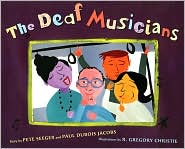
Holling Hoodhood has just begun seventh grade and he is sure that his teacher, Mrs. Baker, hates him. What follows is a month-by-month account of Holling's seventh grade experience complete with all the highs and lows of being a teen growing up in 1967-68 and dealing with the uncertainty of the conflict in Vietnam in this 2008 Newbery Honor book.
On Wednesday afternoons, half of his class goes to worship at Saint Adelbert's (Catholic) while the other half goes to worship at Temple Beth-El (Jewish), which leaves Holling, the sole Presbyterian, to face Mrs. Baker alone. At first she gives him a laundry list of chores to complete and Holling obeys as he was instructed to do so by his father, an architect, who is always trying to secure business relaions in town so that he fares well when he puts in his bid for local projects.
Mr. Hoodhood is solely consumed with his public image and how that relates to the success of his business and he expects his family to obey him and help him support the image of "perfection" that he has built for himself.
After a few weeks, Mrs. Baker decides that they will study Shakespeare on Wednesday afternoons. Holling who always thinks Mrs. Baker, has something up her sleeve, actually finds that he enjoys Shakespeare and thinks that he's finally pulled the wool over Mrs. Baker's eyes believing that if she'd ever read one of Shakespeare's plays she surely wouldn't be letting him read them! In reading/studying Shakespeare, Holling learns about literature and life. He is forever on the quest to find out who he is, instead of who he's supposed to be in his father's eyes.
Holling's sister is a "flower child" as Mr. Hoodhood calls her and she atteds high school. She believes in peace and works on Robert Kennedy's campaign. As siblings Holling and Heather aren't very close until he jumps in front of the school bus to save her life on a snowy afternoon. This sibling relationship shows Holling the depth of love as he makes bol moves in the name of love such aswhen he steps up to bring his sister back home after she leaves during the night for California, but only makes it as far as Minneapolis. Without the help of his parents, Holling cashes in a savings bond and sends her money for a bus ticket home to Long Island and meets her at the station.
Holling is your normal boy growing up in a turbulent era. He deals with bullies at school (Doug Swieteck's brother), falls for a girl named Meryl Lee, loses faith in his heroes and gains some new heroes along the way. All the while he watches Mrs. Baker with suspicion and wonder, not always understanding her motives, but always showing her respect.
This is a story of a young man and the teacher that he will never forget. Mrs. Baker is a mystery to him, and the reader, but she is a very good teacher and she challenges Holling to live above the taunts of middle school and do things as awe-inpsiring as playing Ariel in The Tempest even if it means being seen in public in yellow tights with feathers on the butt.
Readers 12 and up will enjoy this novel, boys and girls alike, and may even catch themselves laughing out loud as they tag along with Holling as the class rats Sycorax and Caliban escape, trek into the woods on a camping adventure in celebration of the end of the school year, and salivate over the buttery aroma of brown, light, perfect cream puffs.
Genre: Historical/Realistic Fiction
Schmidt, G.D. (2007). The wednesday wars. New York: Clarion Books.



